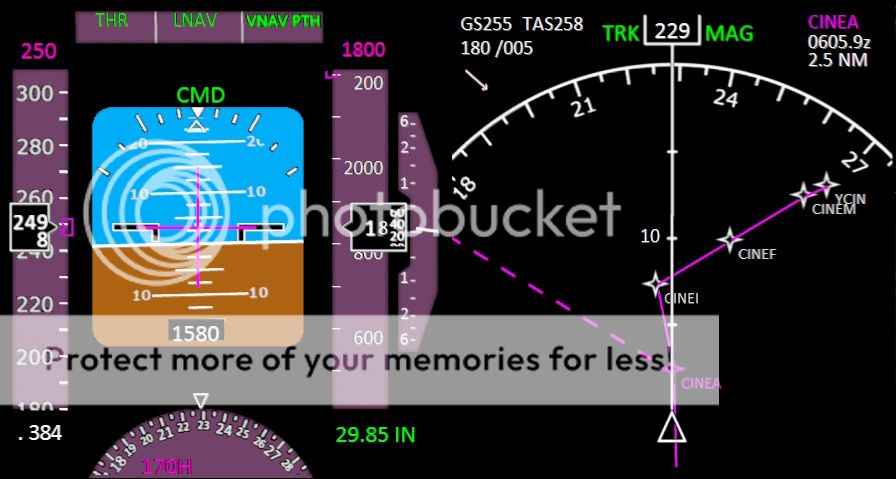I design computer based trainers for airliners such as the 777 and have extensive experience in Level-D simulators for Boeing and McDonnell Douglas aircraft. I have to say that the monotony of the SOP can serve to degrade piloting ability.
As many have already pointed out those are the procedures and it seems that without these procedures and every system working as it should these folks were unable to deliver.
My understand from my experience and from the experience of others is that you don't necessarily have the opportunity to polish or even to get those hand flying skills in these aircraft. There once was a time when jet aircraft were hand flown for a considerable amount of the flight. It seems that time is gone.
These simulators are quite realistic in my opinion. They do provide a realistic enough sensation to allow the pilot to learn to hand fly. But I do not ever recall anyway going in for sim session practice touch and goes, maneuvering, etc in these aircraft. Some may argue that the sim isn't sufficient to provide pilot with the proficiency for these tasks but I would say it is.
A quick example; I've spent more than three years developing a 767-400 desktop trainer. During this time I have gotten very familiar with the aircraft and routine operations. Through out many sim sessions and testing my own software I have become what I would say a pretty proficient pilot in the normal routine of things for a flight in the aircraft. I have become pretty good at flying the aircraft OEI and can land in adverse conditions as well. Yet only recently did I think to try hand flying a significant portion of a flight. Previously I would follow the SOP quite closely. A routine takeoff would call for increasing throttles to about 70% N1 and as they neared activating the THR mode on the Auto-Throttles. A confirmation of their position and from that point on I essentially never touch the throttles again until short final. The system will keep the engine parameters within the appropriate limits and seek the appropriate speed and my task would be altitude and attitude. I personally liked to fly the aircraft through 10,000 feet maybe even sometimes to 18,000. Never to cruise however. This entire time I am just keeping the attitude on the flight director bars really. I mean I know the limitations but I am essentially following the flight director. This helps only slightly in learning real feel for the airplane.
I know many airlines will activate LNAV, VNAV, and A/P right at minimum acceleration height. I know that it is often the case in real life as flying out of Kennedy in real life is a lot more demanding than doing it in the sim.
The airplane will fly itself to cruise and even perform a step climb without the crew ever having to do a thing. All this is already programmed into the FMC. The crew can change it to their specific desires/requirements. A couple hundred miles out from the destination the STAR and arrival runway are confirmed and if they are different from originally planned they will be entered into the FMC otherwise they were already there to begin with and they will not be changed perhaps only confirmed to be correct. The STAR altitude and speed restrictions are already programed into the FMC and the aircraft will fly accordingly to meet those restrictions. Typically on an extended final the aircraft will be configured for landing but still be on autopilot and autothrottle. It is common for the a/p to be disconnected near glide slope/path intercept. With the A/T remaining on holding speed for a bit longer after that. Either at or around minimums most pilots with disconnect A/T and just keep the thrust where it was as if the approach was stable the proper thrust should be set. Upon touch down the spoiler deploy automatically and are only confirmed and the autobrakes as well. Reverse thrust and yada yada.

I have to say I find the information on these displays to be perhaps the best presentation of relevant information that you can find. I do not think that there is anything in the layout that could do any harm to a pilot. I think that they are incredibly aides to flying. They are clearly not the problem.
Since I have started hand flying the airplane in a manor not typical of a flight as described above I have realized just how poorly I fly the aircraft. I have found myself having to go around on a ~10 mile finals if I used absolutely no automation. I have found myself completely incapable of doing a pattern, horrible at maneuvering, and not really familiar with the aircrafts envelope. While I knew in my mind the engines took about ~5 seconds to spool up and get me the power I asked for from idle, I did not know how to apply that knowledge in my flying. I practiced stalls and would lose significant amounts of altitude because by the time I had brought the aircraft to a stall I had forgotten about the ~5 seconds. If I exhibited these traits in a piston aircraft that I fly in the real world I wouldn't be able to pass a check-ride. I suspect a lot of these guys flying this heavy iron are in a boat somewhat similar to mine. Yes they have a bit more sim time than I do and they fly the aircraft in the real world the rest of the time but it is shocking how unable we are at operating the aircraft outside of that typical flight routine/envelope.







